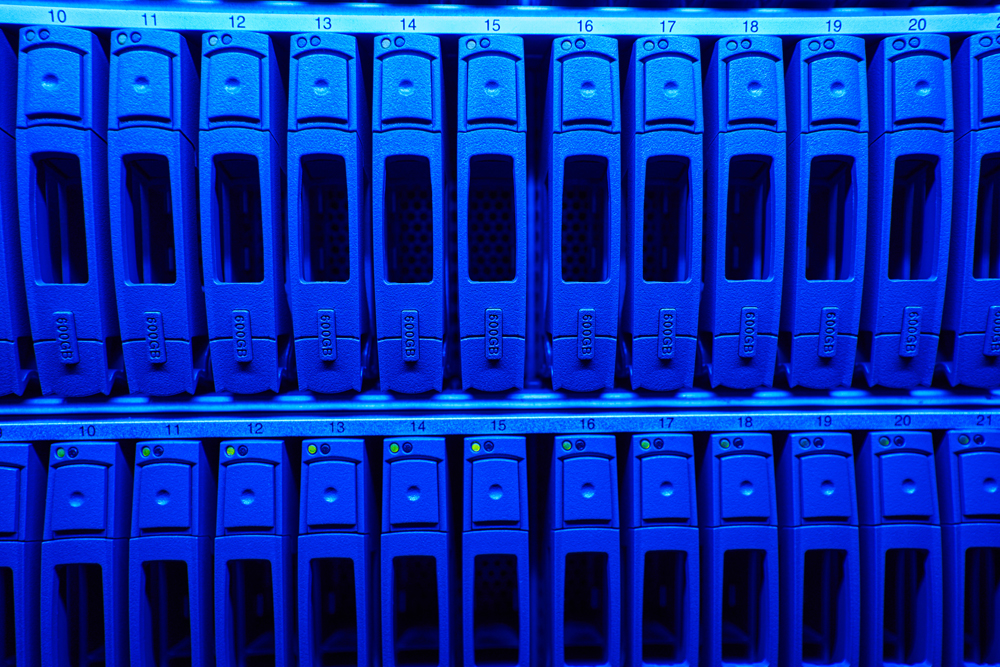Backup and archiving are separate but equally important components of any disaster recovery or data protection plan. Without both, you’re leaving your business vulnerable to downtime and data loss. Backing up without archiving means that your live servers are filled with unnecessary cold data that is taking up space and being backed up repeatedly. On the other hand, if you’re only archiving without backing up, you won’t be able to perform a bare metal restore or recovery when disaster strikes—leaving you to reinstall everything from scratch.
Fortunately, there are software packages out there that can do both backup and archive simultaneously. This means you can use one piece of software for two different tasks, saving time and money while ensuring that your data is safe in an emergency.
But what is the difference between backup and archives, and which backup system should you use?
Please note that industry regulations and legal requirements may require you to keep certain data for a specific amount of time. You’ll be better prepared for potential disasters or disruptions by having a business continuity plan and a comprehensive backup and archiving strategy, no matter what industry your business is in.

Table of Contents
Key Difference Between Backup And Archived Data
Data backups are designed to provide quick access to files in case of an emergency, hardware failure, ransomware attack, or natural disaster. This means that the data is stored on a separate device, such as an external hard drive or cloud storage, and can be quickly retrieved if needed. Data backups are typically done regularly, such as daily or weekly, so the most recent version of the data is always available.
While archiving is used to keep data safe and preserve it for long-term storage. This means that the data is stored in a separate location and can be accessed if needed, but it is not actively used. Archiving is typically done less frequently than backups, such as once a month or once a year.
Now let’s look at the benefits and downsides of each:
Benefits of Data Backups
A robust Data backup approach is an essential part of any storage solution and data protection strategy.
1. Data Recovery: Data backups provide a way to quickly recover lost or corrupted data in the event of a disaster. Depending on what your recovery time objectives are, you can choose to back up your data daily, weekly, or monthly.
2. Cost Savings: Backing up data regularly can help reduce the cost of recovering from a disaster, eliminating the need for costly hardware replacements and repairs.
3. Security: Data backups provide an extra layer of security, as they can be used to restore data if lost or stolen. Working with your disaster recovery plan, data backups can help ensure that your business is prepared for any potential disaster.
4. Compliance: Regularly backing up data can help organizations meet compliance requirements. Failure to comply with industry regulations can result in hefty fines and other penalties.
5. Scalability: Data backups can be easily scaled to meet changing storage needs. If you have added more data to your system, you can easily add more storage space to your backup system.
6. Flexibility: Data backups provide flexibility, as they can be used to restore data to different systems or locations. Allowing you to choose when and where your data is stored.
7. Increased Productivity: Backing up data regularly can help reduce downtime and increase productivity, eliminating the need to recreate lost data manually.
8. Improved Efficiency: Automated backup solutions can help streamline the backup process making your entire network more efficient.
Drawbacks Of Data Backups
Data backups are an important part of any business’s data management strategy. They provide a way to quickly and easily restore lost or corrupted data in the event of a disaster. However, there are some downsides to relying solely on data backups for your data protection needs.
One of the biggest drawbacks of using only data backups is that they can become outdated quickly. As new files are created and existing files are modified, the data stored in the backup may become out of date. This can lead to data loss if a disaster occurs, and the most recent version of the file is not available. Additionally, backups can be time-consuming and expensive to create and maintain.
Benefits of Archive Backups
Organizations can meet regulatory compliances and retention requirements with adequately executed archive systems using archive applications. Here are a few more benefits:
1. Cost Savings: Data archiving can help reduce storage costs by moving infrequently accessed data to a less expensive storage solution. This frees up space on primary storage systems and eliminates the need to purchase additional hardware.
2. Security: Archiving data can help protect it from unauthorized access or malicious attacks by hackers. You also won’t be accessing the archived data as often, which reduces the risk of accidental deletion or corruption.
3. Compliance: Data archiving can help organizations meet compliance requirements related to record retention and privacy regulations and avoid costly fines. No matter what storage service you choose, make sure they have the necessary security measures in place to protect your data.
4. Scalability: Data archiving can be easily scaled to meet changing storage needs. If you have added more data to your system, you can easily add more storage space to your archive system.
5. Improved Efficiency: Automated archiving solutions can help streamline the archiving process and make it more efficient. It can also improve the performance of primary storage systems, as it reduces the amount of data that needs to be accessed and processed.
6. Increased Productivity: By archiving data, organizations can reduce downtime and increase productivity, as they no longer need to recreate lost data manually.
7. Flexibility: Data archiving provides flexibility, as it can be used to store data in different systems or locations. If you choose to store your data in the cloud, you can access it from anywhere.
Drawbacks Of Data Archiving
Backup and archiving are separate but equally important components of any disaster recovery or data protection plan. Without both, you’re leaving your business vulnerable to downtime and data loss. Backing up without archiving means that your live servers are filled with unnecessary cold data that is taking up space and being backed up repeatedly. On the other hand, if you’re only archiving without backing up, you won’t be able to perform a bare metal restore or recovery when disaster strikes—leaving you to reinstall everything from scratch.
Fortunately, there are software packages out there that can do both backup and archive simultaneously. This means you can use one piece of software for two different tasks, saving time and money while ensuring that your data is safe in an emergency.
Please note that industry regulations and legal requirements may require you to keep certain data for a specific amount of time. You’ll be better prepared for potential disasters or disruptions by having a business continuity plan and a comprehensive backup and archiving strategy, no matter what industry your business is in.

When Should A Business Use Data Backups?
Data backups should be used when a business needs to protect its data from loss or damage. Data backups provide an extra layer of security, as they can be used to restore data in the event of a disaster or other emergency. Data backups are also helpful in meeting compliance requirements, as they can help organizations meet specific regulatory requirements. Additionally, data backups can help improve system performance by reducing the amount of data that needs to be accessed and processed.
Tips for Backing Up:
When backing up your data, the best storage media is essential. NAS (Network Attached Storage) is an excellent choice for backup storage as it is accessible and reliable. It also allows you to store copious amounts of data in one place, making it easier to manage and access when needed. NAS can also be used for archiving and backup, so you don’t have to worry about having different media for each purpose.
Cloud storage is another option for backing up your data. It offers the convenience of being able to access your data from anywhere with an internet connection, as well as the ability to store substantial amounts of data. However, it’s important to note that cloud storage can be more expensive than other media types, and security risks may be associated with storing sensitive data in the cloud.

When To Use Data Archiving?
Data archiving should be used when a business needs to store large amounts of data for long periods. Long-term archival storage is usually more secure than data backups, as the archived data is typically kept for more extended periods of time. Data archiving can also help organizations meet specific regulatory requirements, as archived data can be used to meet specific compliance requirements. Additionally, data archiving can help reduce the amount of data that needs to be accessed and processed, improving system performance.
Tips For Archiving:
When it comes to archiving your data, you must select the most effective storage media as this will need to last for an extended period, and there won’t be any chances to check its reliability. Be sure to read customer reviews of both the brand and product before making your purchase. A brand may not always make the best model, even if it is trustworthy. Make sure to choose the correct media type for storing your data securely and reliably. A NAS (Network Attached Storage) is not recommended because it could be connected to other networks, on-site, and outside users, making it a potential security risk. Finally, ensure that whatever storage media you choose is compatible with your existing systems.
Conclusion
In conclusion, no matter what storage method you choose, it’s essential to understand the difference between data backup and archiving. Data backups are used for short-term storage, while data archiving is used for long-term storage. Both are essential components of any data protection plan and should be implemented to ensure your business is protected from downtime and data loss. When archiving data, selecting the most effective storage media is crucial. We encourage researching different brands and models to get an idea of what works best for your needs.
Data backups should be used when a business needs to protect its data from loss or damage, while archived data should be used when a business needs to store enormous amounts of data for lengthy periods. Data backups provide flexibility, as they can restore data to different systems or locations. At the same time, archived data is usually kept for longer periods and is more secure. Data backups are usually less expensive than archiving, requiring less storage space.
For more information about data backups and archiving, please leave a comment below, or send us a message!


Recent Comments